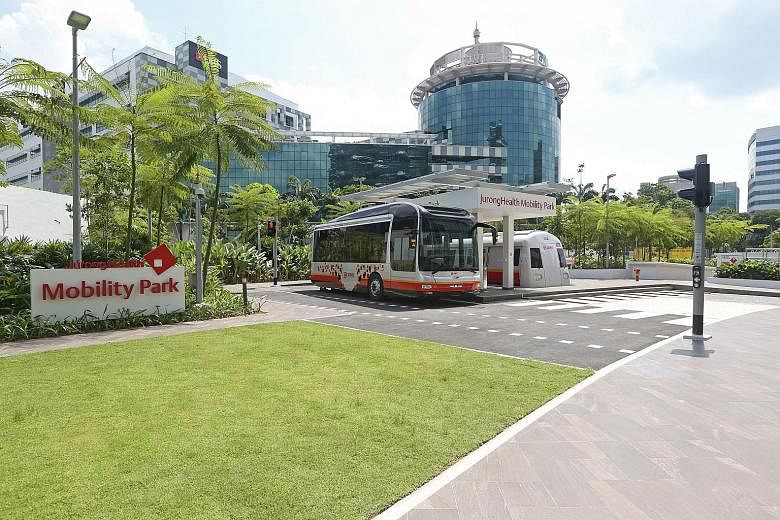Jurong Community Hospital is going the extra mile to help patients get back on their feet - with a mock-up landscape of walkways, a crossing with real traffic lights and life-size replicas of a bus, taxi and MRT train cabin.
Called the JurongHealth Mobility Park, the 953 sq m area is meant to help those who have difficulties walking get used to walking on pavements and taking public transport. The park, situated within Ng Teng Fong General Hospital and Jurong Community Hospital, was launched yesterday morning by Mayor of South West District Low Yen Ling.
Said JurongHealth chief executive officer Foo Hee Jug: "Patients tell us that despite the care they receive from the hospital, it would be very useful for them to be competent in the activities of daily living, such as using the bus, the MRT.
"Therefore, the natural extension of that is to make things real. Otherwise, when patients go through it, they will say, 'But this doesn't look like real life'. So we approached SMRT."
Transport operator SMRT, which sponsored the vehicle models, ensured that details such as platform gaps mirror the real train station details, Mr Foo said.
In future, if there are enhancements in the real trains and buses, changes will be made to the models to reflect those, he added.
The park also has walkways with different surfaces such as ramps, steps and kerbs, for patients to practise walking across them. It also has different types of terrain, such as sand, pebbled surfaces and surfaces with raised wooden strips.
Eventually, the park may be open to members of the public who also need to rehabilitate themselves to normal living.
Some patients who used the park as a trial welcomed the simulated street environment as a way to help them get more ready for life back in the community.
Madam Chua Gek Hong, 75, who just underwent knee replacement surgery, said: "My legs are still not strong enough, so I have started using the park.
"They train us to get up the bus, and it is good because then I will know how prepared I am for a real bus. Hopefully it will help."
Ms Low told reporters after the launch: "This first mobility park is really a part of the enabling and inclusive environment that we are creating in Singapore, and (it is) an example of the many ways that we are trying to help our senior residents to continue to live well and independently."
As the ageing population grows, she added, there is a need to better help seniors, especially those with conditions such as stroke, ease back into their communities and homes using simulated environments.

